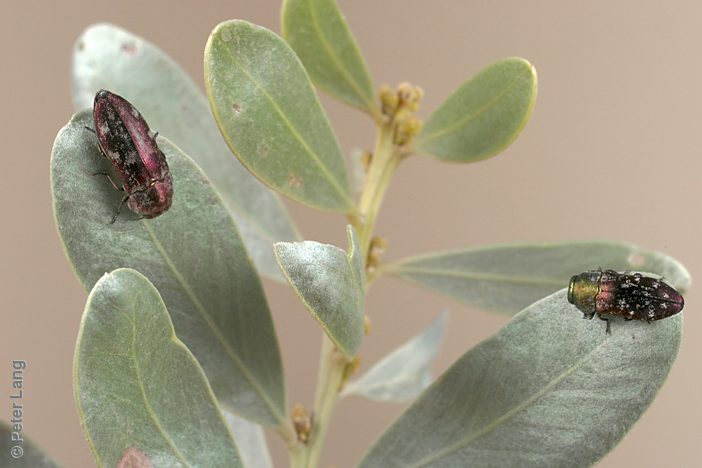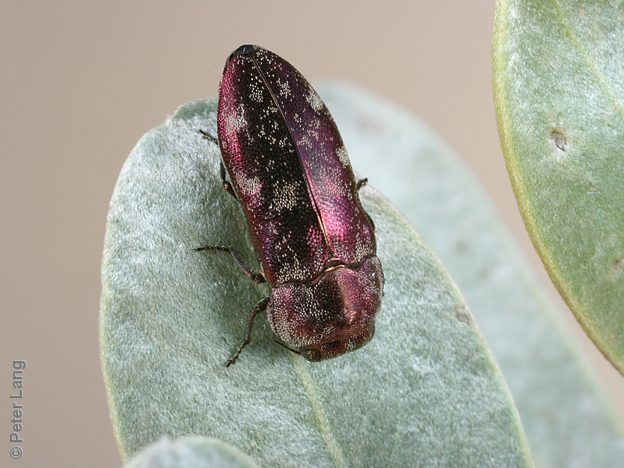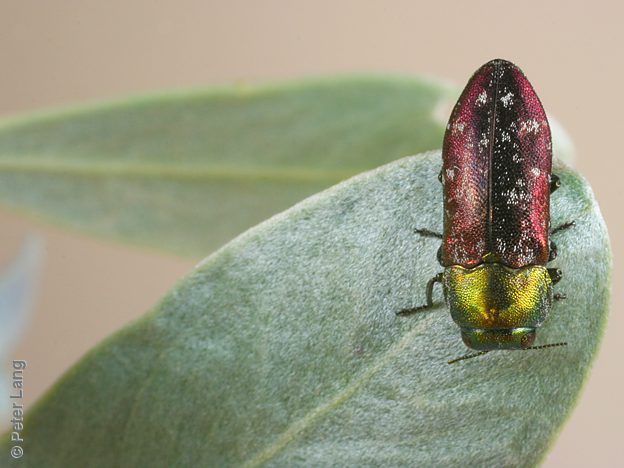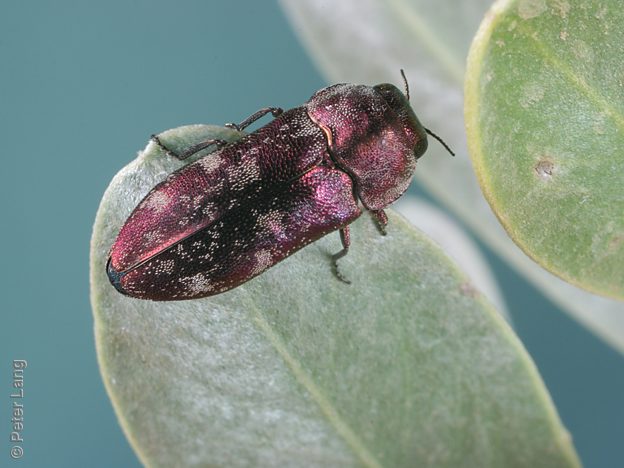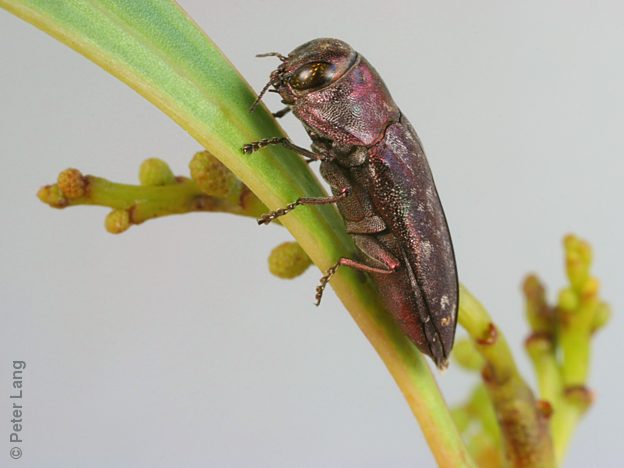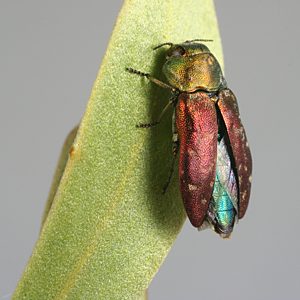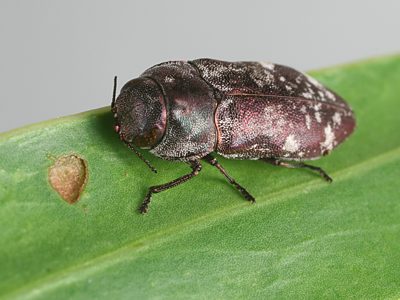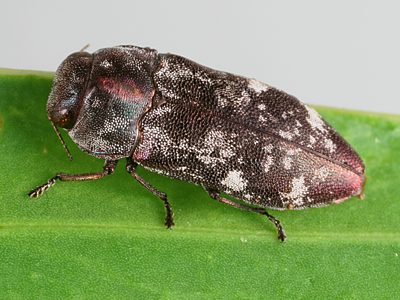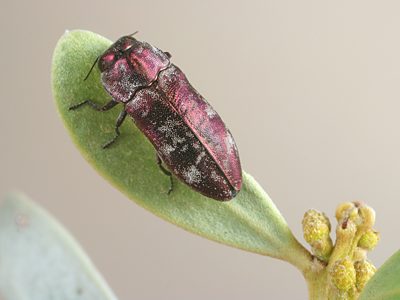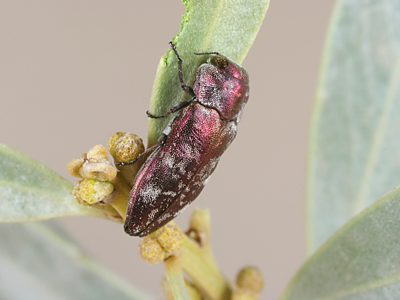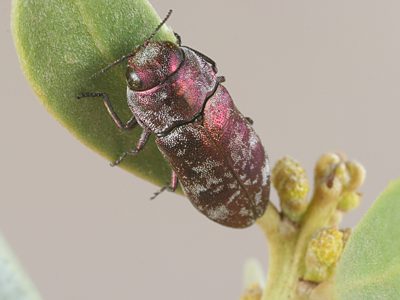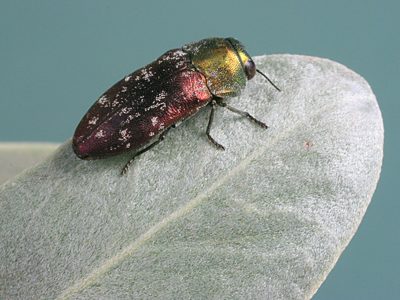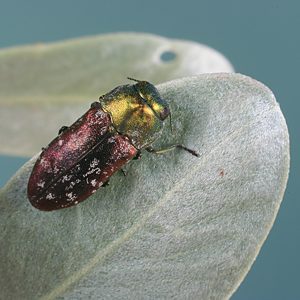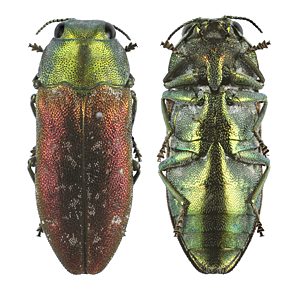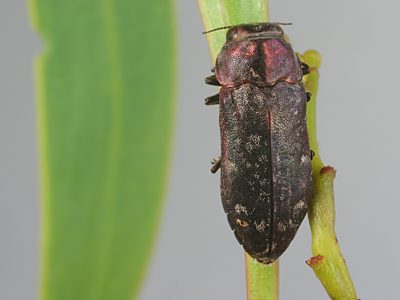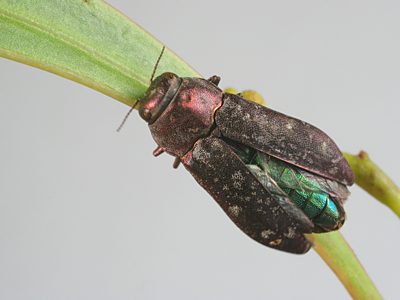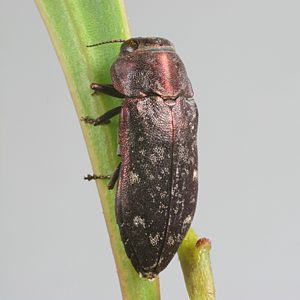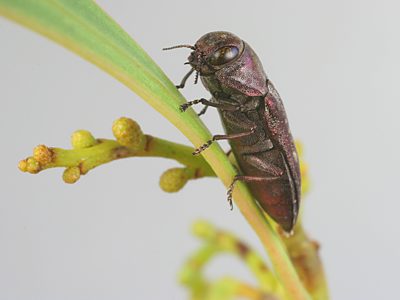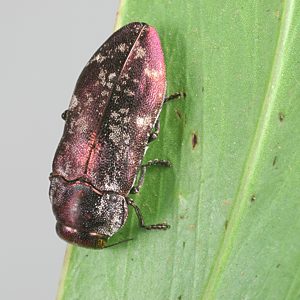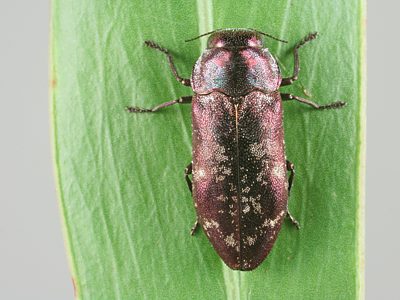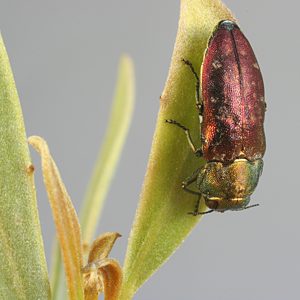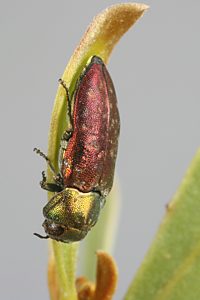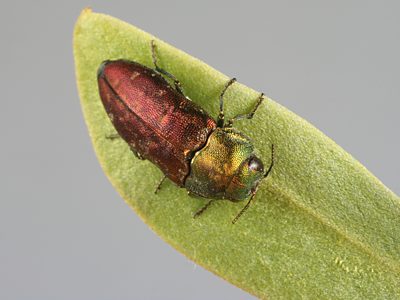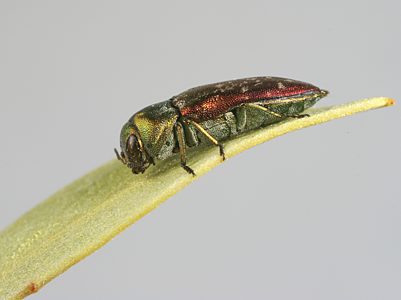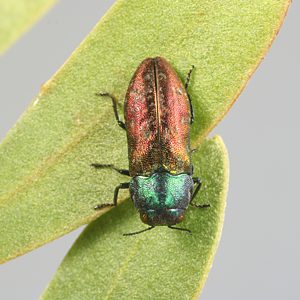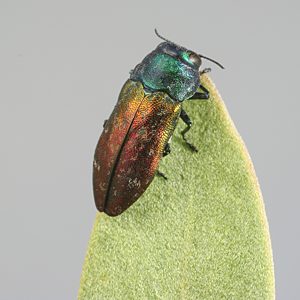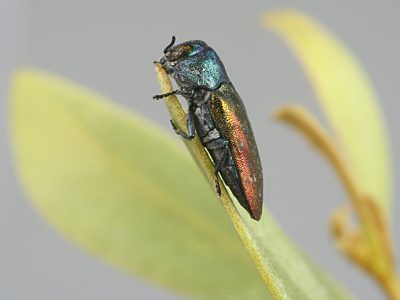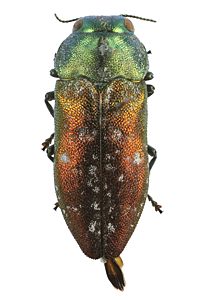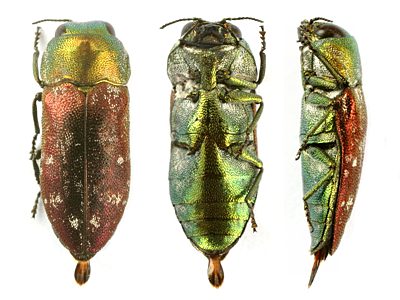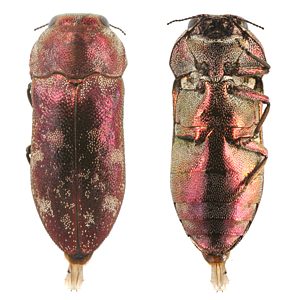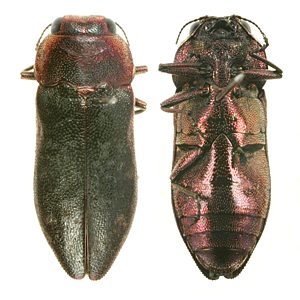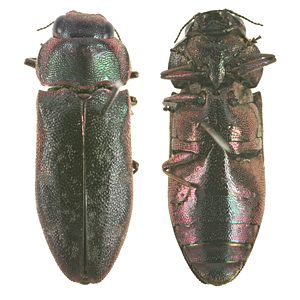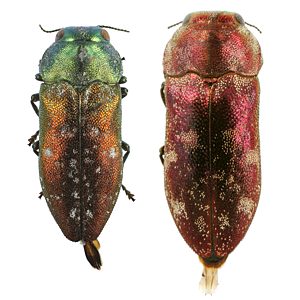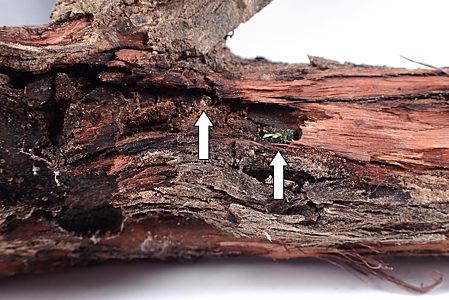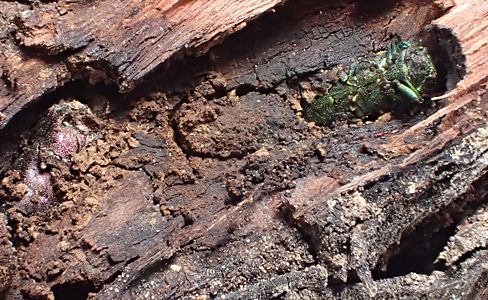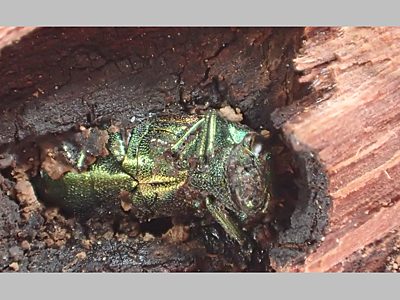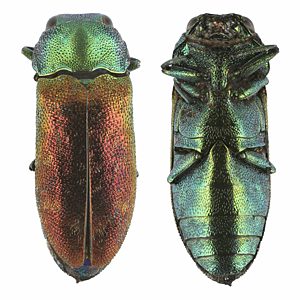A relatively large Diphucrania species with the females generally purplish and the males smaller with green head, pronotum and ventral side.
The strong sexual differentiation in this species led to the females and males being originally described as two separate species. Based on specimens from Adelaide,Germar 1848 (pp.176-77) named the female Ethon nubeculosum and the male E. chalcopterum. Carter 1923a (p. 165) pointed out that they were the same species, and this was confirmed by Barker 1999a when he examined the types in the Humboldt University Museum, Berlin.
| Legend | records | count of breeding adults, pupae and larvae |
| sites | count of major sites (unique 10 km grid cells +/- some distinct approximate localities) |
| adult | live = extracted alive; dead = extracted dead as intact or fragmentary remains; ex billet = reared and emerged from stored sections of host; ex pupa = reared from sampled pupa |
| pupa | extracted pupa; pupa ex larva = reared pupa from larva |
| larva | extracted larva (any stage including prepupa) |
| gall (only) | hatched or unhatched gall identified by form and position rather than contents |
| Plant names in green are hyperlinked to a matching host species page with plant photos. |
Adults are common foliage-feeders on Golden Wattle Acacia pycnantha and other Acacia species in SA. Breeding has only been established in one rather localised host plant species to date (A. spilleriana), but given the abundance and distribution of D. nubeculosa, it is likely that A. pycnantha and other Acacia species will be shown to be larval hosts also.
| ¹ Legend | regions | SA State Herbarium regions (map)
EA: Eastern, EP: Eyre Peninsula, FR: Flinders Ranges, GT: Gairdner-Torrens, KI: Kangaroo Island, LE: Lake Eyre, MU: Murray, NL: Northern Lofty, NU: Nullarbor, NW: North-Western, SE: South-Eastern, SL: Southern Lofty, YP: Yorke Peninsula |
| size | The ellipse is the correct size when printed, indicative on a desktop screen, and likely to be wrong on a mobile device. |
